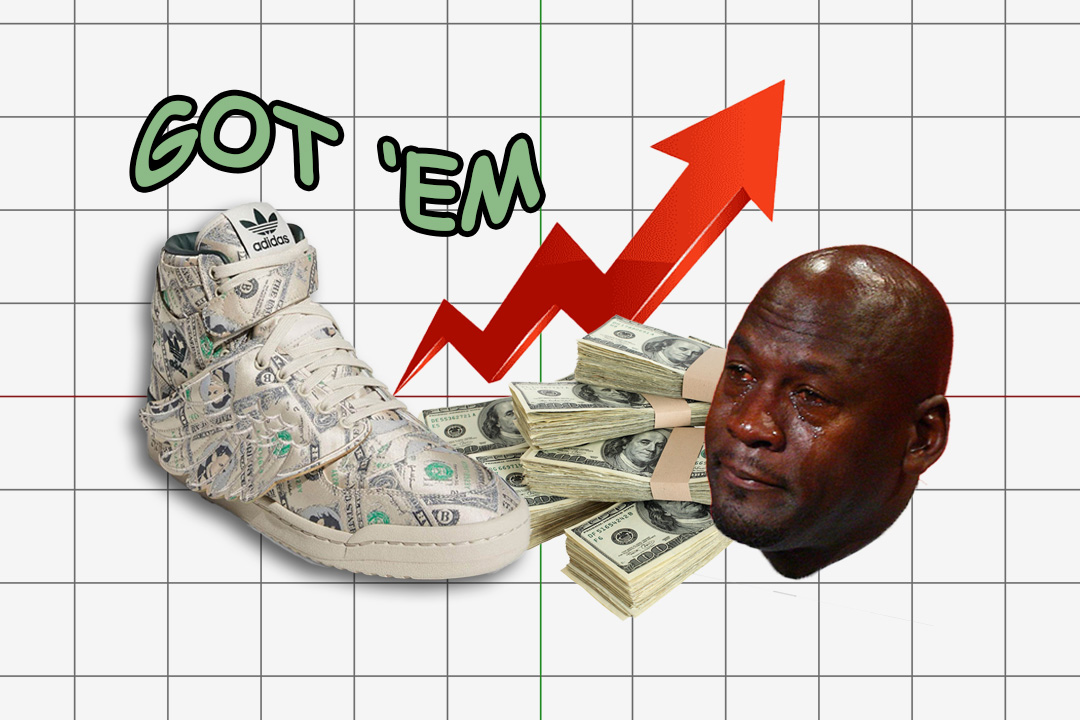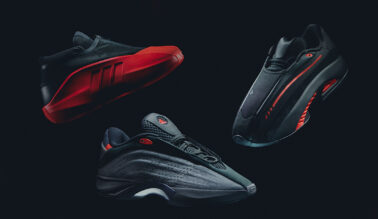This post may contain affiliate links. Please read our disclosure policy.
New data reported by the U.S. Bureau of Labor Statistics reveals that sneaker prices have seen a surge over the past year, rising at the fastest inflation rate in 20-years. Sneaker prices may even see another surge as soon as this upcoming holiday season.
First reported by Footwear News, the U.S. Bureau of Labor Statistics’ monthly reports show that consumer prices rose by 5.4% in September, when they were compared to last year’s sales. By the end of September 2021, shoe prices had increased by 6.5%. Overall compared to 2020, sneaker prices have increased month-by-month, with a 4.5% rise in July and 5.1% rise in August.
Men’s shoes saw an increase of 5.5%, while women trailed behind with 4.9%. Yet the biggest increase of all was kids’ shoes, which rose by 11.9%. As shocking as it was to discover the rise of prices in kids sneakers, brands like Nike make it easy to see the increase. Their gradeschool size Air Force 1 costs an upwards of $80, whereas the adult sizes run around $90. With only a $10 difference between the kids and adults sizes, it’s worth questioning if a $80 children’s shoe is justifiable.
Overall, the Footwear Distributors and Retailers of America (FDRA) were able to calculate that general footwear prices are experiencing the fastest rate of growth in the last 20-years, being that year-to-date prices have increased by 3.2%.
There are a variety of factors at play as to why sneakers are seeing an increase in price. Footwear News shares the FDRA’s monthly report that notes one aspect to consider is the rise in wages for retail employees. The COVID-19 pandemic has turned the world upside down and shaken up systems like never before — including the labor market. It’s no secret that there’s a substantial labor shortage going on, the first of its kind in modern history. It’s unclear if it’s the exhaustion from the pandemic, the surplus unemployment benefits, or the 730,000 deaths reported by the CDC, that has made the labor shortage continue on for longer than anticipated. Employers are frantically trying to fix the problem by offering perks. Initiatives like hiring bonuses, employee referral rewards, increased wages, and other benefits could all be reasons as to why retail prices are experiencing a surge.
With the pandemic’s effects on the labor market to consider, it’s also important to note the rising import charges and duties required for delivery drivers. Distribution fees have continued to grow month-by-month as well, with import charges climbing to $146.3 million USD and duties reaching $320.6 million USD. These distribution increases are especially felt in regards to trade with China.
Footwear News also reports another concerning factor that involves a global shortage of rubber and plastic, both of which are fundamental in the sneaker production process. With limited access to essential materials, it makes it challenging for companies and their corresponding factories to produce enough supply for consumer demand. This production hurdle may also be attributed to the intense labor shortages and factory shutdowns in countries like Vietnam, Malaysia, and China — all of which were affected by the global COVID-19 pandemic as well. These labor shortages have caused an increase in prices for raw materials, creating another hurdle for big business. Footwear News reports, “In some cases, companies are sitting on millions of dollars worth of inventory, because they don’t have access to certain materials to complete unit production.”
These various issues working against each other makes a case for inflation. As we approach the holiday season, footwear prices are expected to keep rising. People hoping to buy sneakers as gifts may be paying some of the highest prices yet, but this growth is expected to continue on well into 2022.
Join the conversation and let us know what you think by mentioning @NiceKicks on Twitter or Instagram. The referenced data doesn’t take into account the theory that resellers are creating false hype, which was recently discussed when it was discovered that Air Jordans sit on shelves in China. Inflated hype could also be another reason as to why retailers are raising prices — chime in!




